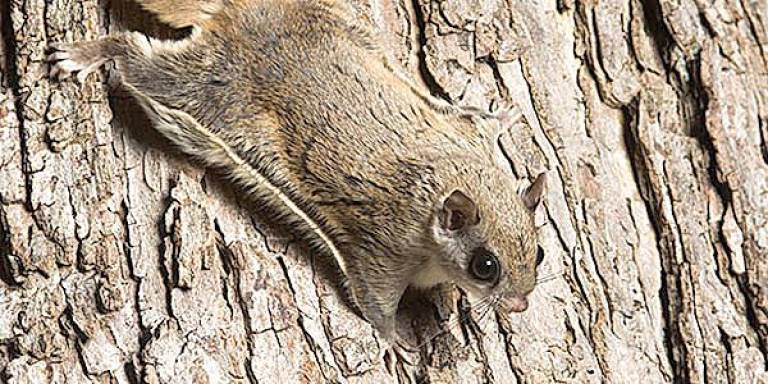Disappearing flying squirrel lacks places to perch
Environment. Northern Flying Squirrels are becoming rare in Pennsylvania because of the diminishment of old growth forests.

As a way of getting around, flying has a lot to offer. Flying gets you away from predators. Gives you, well, a bird’s eye view of your world, access to different food sources, and safer places to build nests and raise young.
Of course there’s “flying.” And then there’s true flying.
Only three kinds of creatures that exist in the modern world have evolved as true flyers: birds, insects, and bats. But the benefits of flight are huge, and dozens of living things have evolved ways to get some of those advantages for themselves.
Flying fish. Flying squid. Flying frogs, lizards, spiders and even snakes, are among the species worldwide that mimic flight by gliding.
With its big dark eyes and round ears, our own Northern flying squirrel (Glaucomys sabrinus macrotis) is about the cutest of such “flying” animals. It is mostly nocturnal — those big eyes are adapted for night vision —and eats fungi, lichen, acorns, nuts, and conifer seeds. Like most gliding mammals, it has flaps of skin (called patagia) from ankles to wrists. By spreading these wing-like flaps and launching itself from a tree, a Northern flying squirrel can glide up to 150 feet, though shorter distances are more common.
Once a common sight in the northern tier of Pennsylvania, the Northern flying squirrel is now endangered in our state (although it is secure nationally). A detailed survey from 2003 - 2007 found only 33 individuals, all but two of them in the Poconos.
Habitat destruction is the culprit.The rich old-growth hemlock and spruce forests that once swept across Pennsylvania have been lost to development, or reduced to small fragments. This kind of northern forest, vast and full of conifers, wetlands, and a woody forest floor is the Northern’s preferred habitat. They also need specific fungi that grow on hemlocks and spruce trees.
So forest managers who favor commercial wood products and young woodlands — combined with the wooly adelgid-caused decline of hemlocks — leave this little squirrel out in the cold.
The best thing an individual can do to help? Make your voice heard about local land use issues. Read the minutes of meetings of your elected officials. Join a township or borough committee. Educate yourself.
It may be too late for the northern flying squirrel in our part of the world. But if people like you who care don’t act, who will?
Habitats that benefit creatures like the Northern flying squirrel also benefit humans by creating clean, abundant drinking water and pure air.